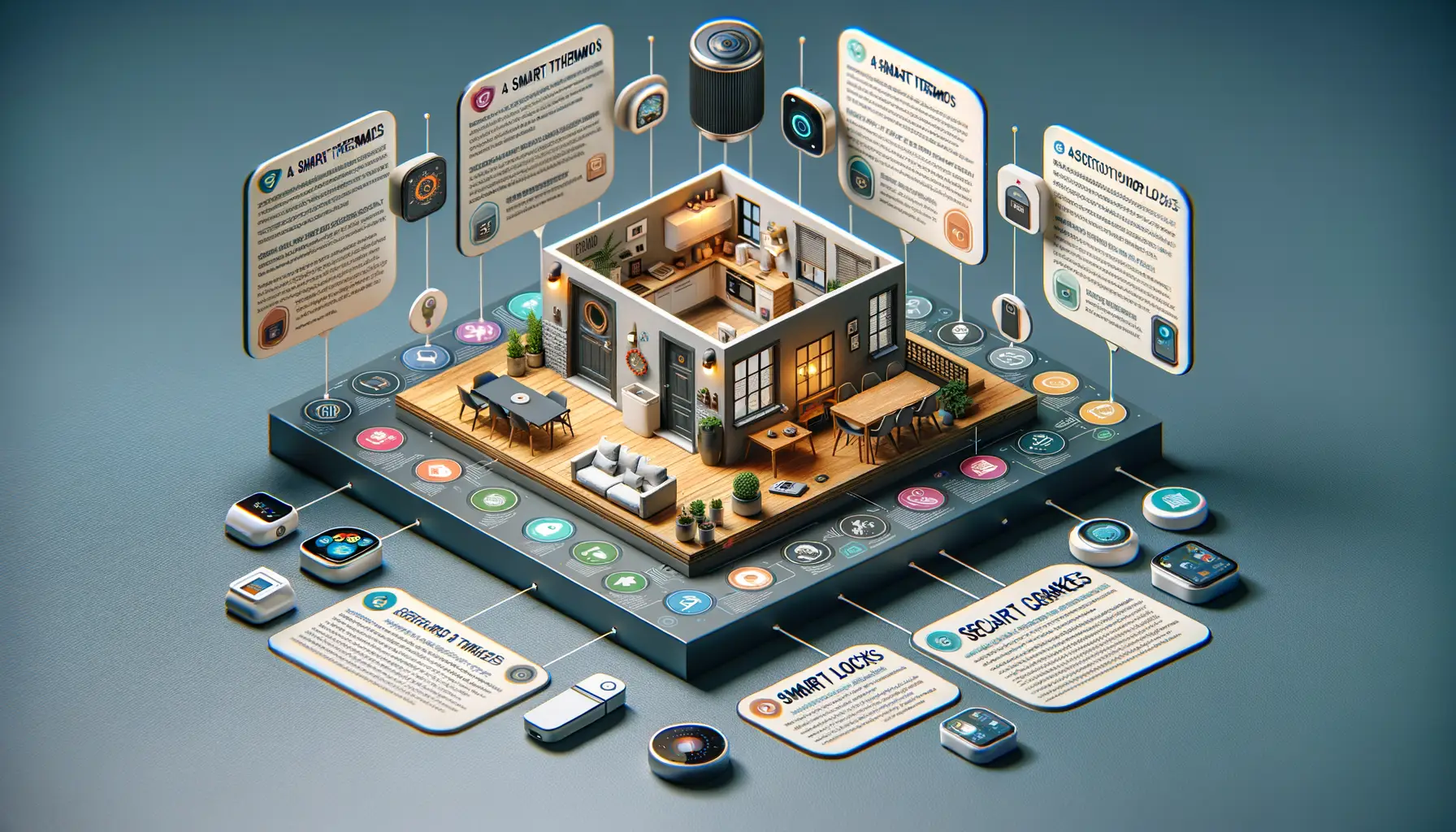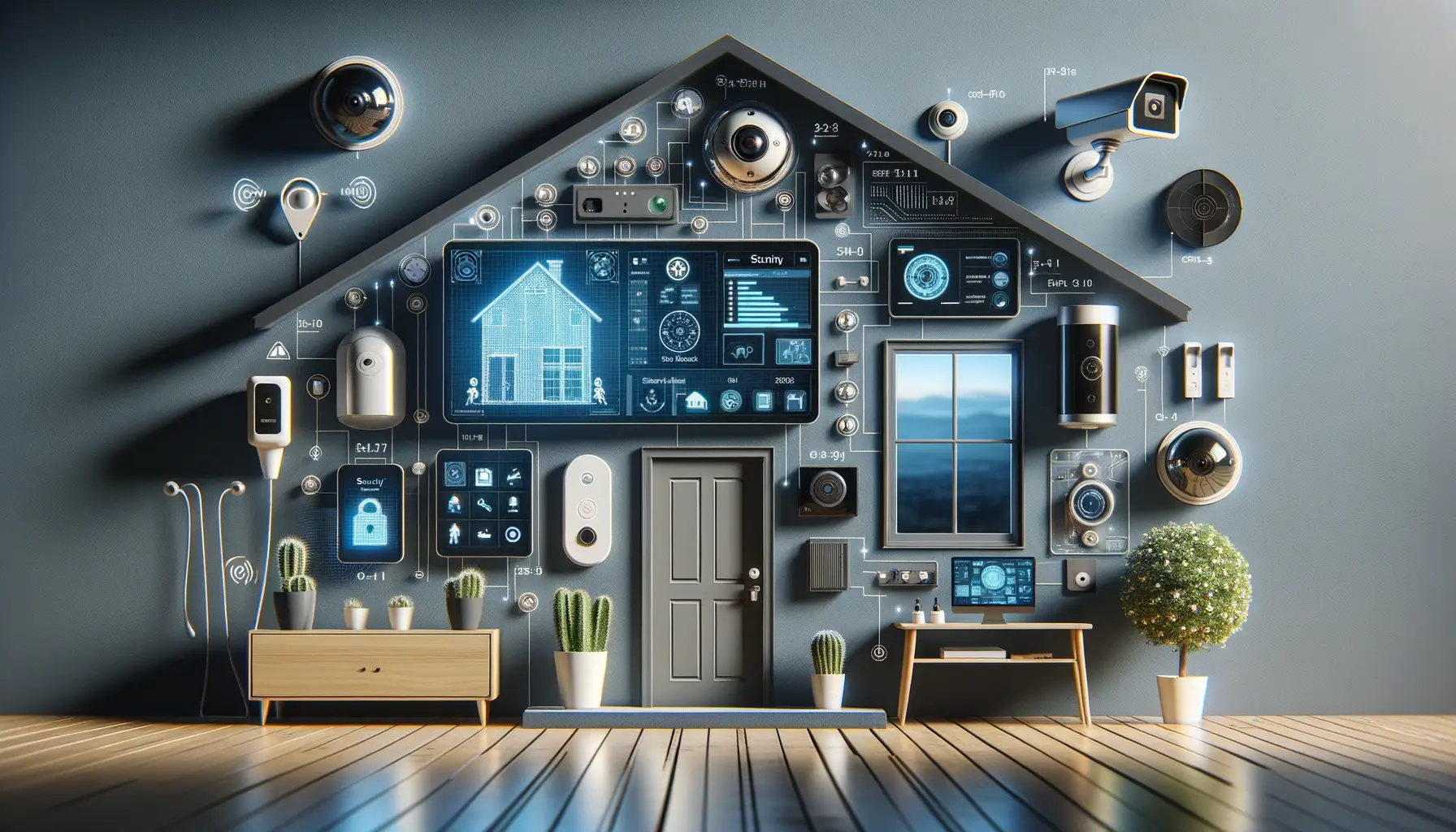Understanding the Risks of Smart Home Hacking
Your cozy, tech-filled home might feel like a fortress of convenience, but here’s the harsh reality: your smart home devices could also be an open door for hackers. Yes, that virtual assistant you chat with daily or the sleek thermostat you adjust from your couch may actually invite uninvited guests into your life. And no, we’re not talking about nosy neighbors!
What Makes Smart Homes Vulnerable?
Think about this: every connected device in your home—be it your charming voice-controlled speaker or your high-tech baby monitor—acts as another entry point for cybercriminals. Hackers tend to exploit weak security settings and outdated software on these gadgets to pry into sensitive areas of your life. Imagine someone remotely watching your security cameras or meddling with your smart locks. It’s not sci-fi—it’s today’s stark reality.
- Weak passwords: Using “password123” won’t cut it anymore!
- Unsecure networks: Your Wi-Fi could be the hacker’s highway without proper encryption.
- Lack of updates: Neglected devices are easy prey.
The Real-Life Implications
Picture this: your personal conversations intercepted, your thermostat cranked up by someone thousands of miles away, or worse, your private data sold on the dark web. These are not just technical hiccups—they can leave you feeling violated and unsafe within the walls of your own home. And let’s not forget the financial impact: ransomware attacks can lock you out of your systems until you pay a hefty price. Spooky, right?
Remember, protecting your smart home isn’t just about adding layers of technology—it’s about safeguarding your peace of mind.
Best Practices for Securing Smart Home Devices

Fortify Your Smart Home Like a Digital Fortress
Your smart home is like a treasure chest, brimming with tech delights. But guess what? Hackers are the modern-day pirates, and they’re hungry for your loot. Let’s secure those devices and shut them out for good.
Start with the basics: your Wi-Fi network. This is the doorway to your smart home kingdom. Use a strong, unique password—no “123456” or “password” here, please! Go bold with something like “G0ldenDr@gon$2023”. Better yet, set up a separate guest network for visitors so they aren’t stomping around on your primary connection.
Software updates are another superhero in disguise. You wouldn’t leave your front door wide open, right? Well, outdated firmware does just that. Enable automatic updates, or make it a monthly ritual to check all your devices manually—smart thermostats, cameras, speakers and more.
- Enable two-factor authentication on every account it’s offered.
- Turn off device features you don’t use, like remote access or voice purchasing.
- Rename default device names to something only you’ll recognize—“LivingRoom_Cam” is a dead giveaway.
Small steps, massive payoff. Soon, your smart home will feel as secure as Fort Knox!
Advanced Security Measures for Tech-Savvy Users

Why Going Beyond Basics Matters
Let’s face it—your smart home is only as secure as the measures you’ve put in place. If you’re a tech-savvy user, the basics just won’t cut it. Hackers evolve, and so should your defenses. Imagine leaving your high-tech, voice-activated door lock “secured” with a factory-default password. Exactly—might as well leave them a spare key under the mat.
Here’s where advanced tactics come into play. Start by enabling multi-factor authentication (MFA) on every app or device that supports it. It’s like requiring two secret handshakes to get in—not just one. Next, dive into your router’s settings. Change the default SSID to something unique (no more “Home_WiFi123”), and enable WPA3 encryption, the Fort Knox of wireless protocols.
- Set up a dedicated guest Wi-Fi network for visitors and non-essential devices.
- Use virtual private networks (VPNs) to shield your data when managing devices remotely.
- Periodically audit permissions—do all those apps really need constant access?
By layering your security like an onion (or a really good lasagna), you create hurdles hackers hate jumping through. Because let’s be real—nothing says “not worth my time” more than an airtight fortress.
Common Mistakes to Avoid When Securing Smart Homes

Overlooking the Basics
Picture this—your shiny new smart thermostat is set up, the lights dim on command, and your voice assistant plays your favorite tunes. It’s futuristic bliss, right? But behind the scenes, a single weak link, like an unchanged default password or an unpatched firmware update, could invite hackers faster than you can say “Hey, Alexa.” One of the most common mistakes people make is trusting that their devices are secure out of the box. Spoiler alert: they’re not.
To avoid becoming an easy target:
- Change default passwords immediately. Those default credentials are basically an open secret for hackers.
- Enable two-factor authentication (2FA). Trust me, it’s worth those extra five seconds to keep cyber sleuths out.
- Update your devices regularly. Firmware updates aren’t just annoying pop-ups—they’re critical patches for vulnerabilities.
Forgetting About Your Network Security
Here’s the kicker: even if your devices are locked down like Fort Knox, your network might still be a wide-open door. Think of your home Wi-Fi as the digital foundation of your smart ecosystem. A sloppy setup here is like building a castle on quicksand.
Are you still using your ISP’s generic Wi-Fi name and password? Change it now! Create a unique SSID that doesn’t reveal personal info and use a strong, quirky passphrase (e.g., “TacoTuesdayForever2023!”). And don’t forget to activate WPA3 encryption for maximum security.
Finally, consider setting up a separate guest network for your smart devices. Why? Because isolating them from your main network is like putting a moat around that castle—extra protection that lets you sleep at night.
Proactive Monitoring and Maintenance of Your Smart Home Security

Why Your Smart Home Needs Regular Checkups
Think of your smart home security like a car. You wouldn’t drive for years without checking the brakes or changing the oil, right? The same principle applies here! Without consistent care, even the smartest gadgets can fall prey to cyber threats lurking in the digital shadows.
A few easy steps can keep you ahead of hackers:
- Update, update, update! Firmware and software updates are your defense against newly discovered vulnerabilities.
- Check device activity logs. These are your window into unusual behaviors, like logins from strange locations.
- Reevaluate passwords. Even the best password can grow stale. Consider changing yours every few months.
How Automation Can Be Your Security Sidekick
Why not let your tech help guard itself? Most modern devices support automated monitoring. For example, set alerts with your smart thermostat to flag sudden adjustments or enable notifications on cameras for motion detection. These tweaks act like a digital watchdog, always on duty while you’re catching up on Netflix.
And don’t forget: some manufacturers now offer proactive monitoring services that notify you of breaches before you notice. A little peace of mind goes a long way when it’s your home at stake!
